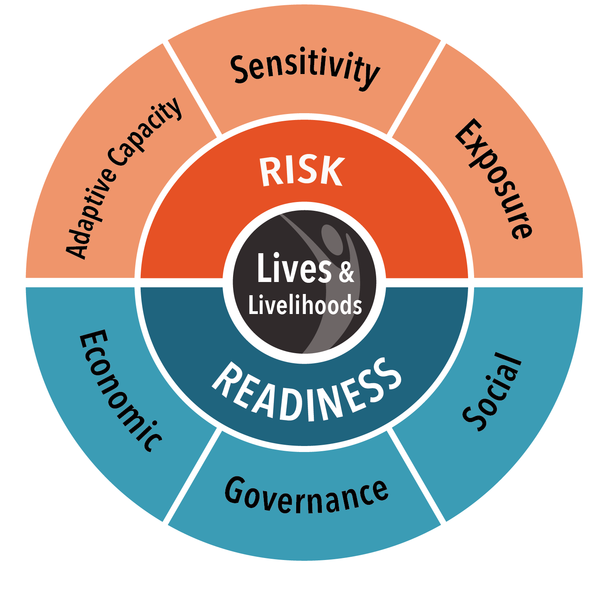Methodology
DOWNLOAD UAA DATAVIEW TECHNICAL DOCUMENT
The Urban Adaptation Assessment consists of key components used to measure a city’s overall adaptability, these include:
 RISK
RISK
A city’s vulnerability to climate change. Risk incorporates exposure, sensitivity and adaptive capacity:
Exposure relates to physical exposure, which means the number of individuals and critical infrastructure exposed to climate hazard event. Exposure has a geographic and temporal character.
For extreme cold, heat, flooding and sea-level rise, sensitivity refers to the degree to which population of the city are affected by climate hazards. Adaptive capacity refers to the city’s ability to respond to the consequences of climate hazards.
By way of example, drought sensitivity refers to the degree to which economic sectors rely on water-intensive industries (agriculture, water transportation, mining, utilities) and adaptive capacity reflect ability of the city to manage drought through the management plans, or early warning systems.
READINESS
The capacity of an urban society has to mobilize adaptation investments from private sectors, and to target investments more effectively. Readiness is a function of economic, governance, and social readiness:
Economic Readiness: The economic condition to support adaptation and to attract adaptation investment.
Governance Readiness: The governance support that enables effective use of adaptation investment.
Social Readiness: The social capacity that facilitates the uptake of the benefits brought about through adaptation investment.